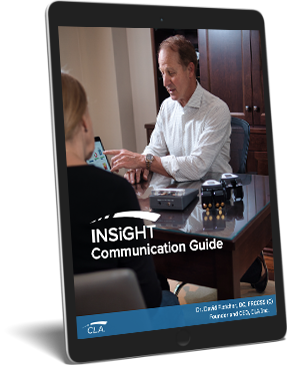By Dr. Christopher Kent
Many scientists and clinicians consider the placebo-controlled trial the “gold standard” for evidence-based practice. Coulter [1] notes that according to The Office of Technology Assessment, “Objections are rarely if ever raised to the principles of controlled experimentation on which RCTs are based.” Others have stated that placebo-controlled trials are needed to provide data on effectiveness of active treatment. [2]
Interestingly, surgical procedures are often exempt from such scrutiny. Ethical considerations are considered barriers to the use of placebo-controlled investigations for surgical procedures. [3,4] Interestingly, there have been five studies where placebo surgery was used as a control. The placebo group generally did as well or better than the group receiving the real operation.
In 1939, a surgeon named Feischi developed a surgical procedure for angina pectoris. He reasoned that if the blood flow to the myocardium could be increased, the symptoms of angina would diminish. It was felt that ligating the internal mammary artery would increase myocardial blood flow. The clinical results were favorable, and the operation became popular, with three-quarters of patients reporting improvement or elimination of symptoms. [5]
Twenty years later, The New England Journal of Medicine (NEJM) published the results of a placebo-controlled trial of internal mammary artery ligation. [6] Of 17 patients, eight got the actual operation. The other nine were anesthetized and got incisions, but nothing else. The fake operations worked as well as the real thing. As a result, internal mammary artery ligation surgery was soon abandoned.
The next wave of placebo surgery involved the human brain. Fetal pig nerve cells were implanted into the brains of 10 patients with Parkinson’s disease. Eight patients had holes drilled into their heads, but received no implants. It was reported that “no significant improvement resulted from implanting the fetal cells of pigs into patient brains when compared with subjects who received placebo surgery.” [7]
A second study, involving the implantation of stem cells from aborted human fetuses into the brains of patients with Parkinson’s disease, was reported in NEJM. [8] Twenty of 40 patients received sham surgery, and 20 got the real thing. Holes were drilled into the skulls of the patients receiving sham surgery. Thankfully, the authors noted that “the dura was not penetrated.” Some younger subjects were claimed to experience some benefit. Older subjects receiving the stem cells reported a worsening of their condition.
The latest study was a controlled trial of arthroscopic surgery for osteoarthritis of the knee. A total of 180 patients with osteoarthritis of the knee were randomly assigned to receive arthroscopic debridement, arthroscopic lavage, or placebo surgery. Pain and function were assessed over a 24-month period. The result? “At no point did either of the intervention groups report less pain or better function than the placebo group.” [9] This investigation followed a smaller pilot study with similar results. [10]
The notion of being subjected to unnecessary surgery is horrifying enough. Yet, that is only part of the story. According to one report, arthroscopic surgery for osteoarthritis of the knee is done on at least 225,000 Americans each year, termed “a sham” by Dr. Baruch Brody, an ethicist at Baylor College of Medicine. [11] The cost of this intervention is estimated at $3.25 billion per year. [3]
The power of the placebo cannot be denied — mobilization of the inherent recuperative powers of the body. With placebo surgery, we must ask, “At what cost, and at what risk?” Keep this in mind the next time someone tells you they have to have surgery. Where’s the science? Or are anecdotes and conjecture good enough?
References
1. Coulter H: “The controlled clinical trial. An analysis.” Washington (DC): Center for Empirical Medicine. Project Cure; 1991.
2. “Placebo controlled trials are needed to provide data on effectiveness of active treatment” (editorial). British Medical Journal 1996;313:1008.
3. Horng S, Miller FG: “Is placebo surgery unethical?” N Engl J Med 2002;347(2):137.
4. Weijer C: “I need a placebo like I need a hole in the head.” J Law Med Ethics 2002;30(1):69.
5. Stolberg SG: “Sham surgery returns as a research tool.” The New York Times. 4/25/99.
6. Cobb LA, Thomas GI, Dillard DH, et al: “An evaluation of internal mammary artery ligation by a double-blind technic.” N Engl J Med 1959;260:1115.
7. Hung M: “Placebo surgery gains wider acceptance.” http://www.medscape.com/viewarticle/411258
8. Freed CR, Greene PE, Breeze RE, et al: “Transplantation of embryonic dopamine neurons for severe Parkinson’s disease.” N Engl J Med 2001;344(10):710.
9. Moseley JB, O’Malley K, Peterson NJ. Et al: “A controlled trial of arthroscopic surgery for osteoarthritis of the knee.” N Engl J Med 2002;347(2):81.
10. Moseley JB, Wray NP, Kuykendall D, et al: “Arthroscopic treatment of osteoarthritis of the knee: a prospective, randomized, placebo-controlled trial. Results of a pilot study.” Am J Sports Med 1996;24(1):28.
11. Kolata G: “A knee surgery for arthritis is called a sham.” The New York Times. 7/11/02.




























































